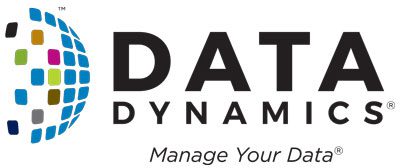Highlights:
- Unlike other industries that jumped headfirst into the cloud, banks and financial institutions have been slow and deliberate. They’re stuck with aging tech systems (legacy systems) that are deeply ingrained in their operations. Simply moving these systems to the cloud (“lift-and-shift”) hasn’t always saved the money they expected.
- But the cloud has some clear advantages. Cloud-based platforms offer a level of elasticity and compute power that traditional on-premise infrastructure simply can’t match. A hybrid cloud approach can be a viable solution given the highly regulated BFSI industry.
- However, the real key to unlocking the power of the cloud lies in how banks handle their data. Financial institutions are finally realizing that data is their most valuable asset, but keeping it locked away in different places (siloed) makes it hard to use effectively.
- By embracing a secure and scalable cloud infrastructure, coupled with robust data management practices and advanced analytics capabilities, banks can unlock the true potential of their data and transform themselves into data-driven powerhouses.
In this Blog:
The traditional image of a bank – a stoic brick-and-mortar building – is slowly fading. Today’s financial institutions are undergoing a digital transformation, and at the heart of this change lies the cloud. This blog delves into the evolving relationship between banks and the cloud, exploring the reasons behind the slow adoption, the ways to accelerate it, and the immense potential for innovation that the cloud unlocks. We’ll also examine how banks can leverage data, the new gold of the industry, to gain a competitive edge in the cloud-powered future of banking.
Beyond Legacy Systems: Why Cloud Adoption in Banking is Slow (But Inevitable)
The gleaming facades of modern banks belie a hidden truth: beneath the veneer of progress lies a labyrinth of creaking legacy systems. While other industries have embraced the cloud’s agility and scalability, banking institutions, entrusted with safeguarding our financial well-being, approach this digital revolution with measured steps, bordering on hesitancy. This begs the question: in an age of Fintech disruption and tech-savvy customers, why is cloud adoption in the financial sector moving at a glacial pace?
The answer is multifaceted. Legacy systems, built decades ago, form the backbone of most banks’ operations. These monolithic structures, often custom-built and deeply integrated, are notoriously complex and expensive to maintain. Migrating this critical data to the cloud is a daunting task, fraught with potential risks. Regulatory hurdles add another layer of complexity. Banks are subject to stringent data security and privacy laws, and the very notion of entrusting sensitive financial information to a third-party cloud provider raises concerns. A 2022 survey by Accenture found that 72% of bankers believe that complying with data privacy regulations is a major challenge in cloud adoption.
Security is paramount. Breaches in the financial sector can have catastrophic consequences, both reputational and financial. The dark spectre of cyberattacks looms large, and banks are understandably wary of exposing their systems to potential vulnerabilities. Cloud providers, however, have made significant strides in fortifying their security measures. They offer robust encryption protocols, access controls, and disaster recovery solutions. Additionally, the cloud’s inherent scalability allows for constant security upgrades and faster patching of vulnerabilities, something legacy systems often struggle with.
Beyond the technical concerns lies a cultural inertia. Banks, by their very nature, are risk-averse institutions. The prospect of a large-scale migration project, with the potential to disrupt daily operations, is understandably unsettling. There’s a fear of the unknown, a reluctance to abandon the familiar, even if it’s less efficient. This risk-averse culture can stifle innovation and make banks less adaptable to the changing financial landscape.
However, the tide is slowly turning. The benefits of cloud computing are undeniable. A recent study by IBM found that 82% of banking executives believe cloud computing is essential for developing and deploying new digital solutions. Cloud-based systems offer superior scalability and agility, allowing banks to adapt to evolving customer demands and deploy new financial products and services faster. Cloud’s inherent elasticity translates into cost savings, as banks only pay for the resources they use. Furthermore, the cloud fosters collaboration and innovation. By leveraging cloud-based platforms and APIs, banks can integrate with Fintech startups and develop new, data-driven financial solutions. For instance, JPMorgan Chase, one of the world’s largest banks, has adopted a hybrid cloud strategy. The bank keeps its core banking systems on-premise while using the cloud for a wide range of other applications, including fraud detection and risk management. This approach allows JPMorgan Chase to benefit from the agility and scalability of the cloud while ensuring the security and compliance of its most sensitive data.
The path forward requires a paradigm shift. Banks need to move beyond a “lift and shift” approach to cloud migration, where legacy systems are simply ported over. Instead, they should embrace a cloud-native approach, where applications are rearchitected to take full advantage of the cloud’s capabilities. This requires collaboration between IT teams, business leaders, and cloud providers. Regulatory bodies, too, need to play a role by creating a clear and supportive framework for cloud adoption in banking.
The cloud is not a silver bullet, but it is a powerful tool that can unlock new possibilities for the banking sector. As customer expectations evolve and competition intensifies, banks that embrace the cloud will be better positioned to navigate the future of finance. The question isn’t whether banks will move to the cloud, but when. The longer they wait, the greater the risk of falling behind in the digital race.
And this is where Data comes in.
Cleaning House Before the Cloud: Why Data Analytics is Key for Banks
The financial sector is experiencing a digital deluge. Cloud migration is no longer a question of “if” but “when,” with banks lured by promises of scalability, cost-efficiency, and agility. However, before diving headfirst into the cloud, a critical step is often overlooked: data analytics and management.
For banks, data is the lifeblood. From customer transactions and credit histories to market trends and regulatory requirements, the sheer volume and complexity of financial information can be overwhelming. A study by IBM found that by 2025, the global datasphere is projected to reach 175 zettabytes – that’s 175 trillion gigabytes! Within this ever-growing data lake lies a treasure trove of insights, but only if banks can effectively analyze and manage it.
Here’s why data analytics is crucial before a bank sets sail for the cloud.
Firstly, the cloud amplifies pre-existing data woes. Migrating a messy data landscape to the cloud can be akin to moving a cluttered house – you simply end up with clutter in a new location. Inconsistent data formats, duplicate records, and incomplete information can plague a bank’s data infrastructure. Cloud migration without proper data cleansing can lead to integration issues, hindering the very functionalities the cloud promises. Analytics tools can help identify these discrepancies and inconsistencies, allowing banks to clean and categorize their data before the move. This not only streamlines the migration process but also reduces storage costs in the cloud. Studies by Gartner show that poor data quality can inflate cloud storage bills by up to 70%, highlighting the financial benefits of data cleansing.
Secondly, data analytics empowers informed cloud selection. Not all clouds are created equal. Different cloud providers offer varying levels of security, compliance, and data residency options. By leveraging data analytics, banks can understand their specific data needs and regulatory obligations. This allows them to select a cloud provider that best aligns with their data governance strategy and risk tolerance. For instance, a bank with a large international customer base might prioritize a provider with strong global presence and robust data residency options to comply with regional regulations.
Thirdly, the cloud unlocks the power of advanced analytics. Cloud platforms offer access to powerful computing resources and big data analytics tools. However, without a strong foundation in data management, banks struggle to leverage these capabilities. Data analytics helps banks understand what data is most valuable, where it resides, and how it can be used to generate actionable insights. This knowledge empowers them to harness the cloud’s true potential for fraud detection, customer segmentation, and risk management. By analyzing historical transaction data and identifying patterns, banks can develop more sophisticated fraud detection models in the cloud, saving them millions in potential losses.
Finally, a robust data management strategy fosters trust and transparency. Cloud adoption raises concerns about data security and privacy. By understanding their data landscape through analytics, banks can demonstrate a proactive approach to data governance. This not only fosters trust with regulators but also reassures customers that their financial information is secure in the cloud. Data analytics can also help banks identify and classify sensitive data, allowing them to implement stricter access controls and encryption measures within the cloud environment. This proactive approach strengthens compliance with regulations like the General Data Protection Regulation (GDPR) and builds trust with customers in an increasingly data-driven world.
The cloud presents a golden opportunity for banks to streamline operations, improve efficiency, and gain a competitive edge. However, neglecting data analytics before migration can turn this opportunity into a costly pitfall. By prioritizing data hygiene and leveraging analytics tools, banks can ensure a smooth transition to the cloud, unlocking its true potential for cost savings, enhanced security, and robust compliance. Let’s find out more.
The Perks: Balancing Infrastructure, Analytics, and Data Management in the Cloud
Traditional on-premise infrastructure often struggles with the sheer volume, velocity, and variety of data generated in today’s digital banking landscape. Legacy systems can become bottlenecks, hindering real-time analytics and slowing down the decision-making process. Here’s where the cloud steps in, offering a scalable and elastic foundation for data storage and processing. Cloud platforms like Amazon Web Services (AWS), Microsoft Azure, and Google Cloud Platform (GCP) boast near-infinite scalability, allowing banks to seamlessly scale their infrastructure up or down based on their data processing needs. This eliminates the need for expensive upfront investments in hardware and software, freeing up capital for innovation.
Security remains a paramount concern for banks, especially when dealing with sensitive financial information. Cloud service providers invest heavily in state-of-the-art security measures, including encryption at rest and in transit, access controls, and intrusion detection systems. Additionally, the cloud offers a geographically distributed infrastructure, meaning data can be replicated across multiple data centers, minimizing the risk of outages or disruptions. Regulatory compliance is another crucial aspect for banks in the BFSI (Banking, Financial Services, and Insurance) sector. Cloud providers offer a wide range of compliance certifications, ensuring that banks can adhere to data privacy regulations like GDPR (General Data Protection Regulation) and CCPA (California Consumer Privacy Act).
However, data security and scalability are just two pieces of the puzzle. To truly harness the power of their data, banks need robust data management practices. Cloud platforms offer a centralized environment for storing and managing vast amounts of data, breaking down data silos that have traditionally plagued on-premise systems. This unified data view allows banks to gain a holistic understanding of their customers, identify trends and patterns, and develop data-driven strategies for growth.
Here’s where data governance comes into play. Banks need to establish clear policies and procedures around data ownership, access control, and usage. This ensures that data is used responsibly, ethically, and in compliance with regulations. Data quality is equally important. Inaccurate or incomplete data can lead to flawed insights and poor decision-making. Cloud-based data management tools can automate data cleansing and validation processes, improving the overall quality of data used for analysis.
Data democratization is another critical aspect of maximizing the value of data. Traditionally, data has often been siloed within different departments within a bank. Cloud platforms can help break down these barriers by fostering a culture of data sharing. This allows different departments, from marketing to risk management, to leverage a unified data view, leading to more informed decision-making across the organization.
While the public cloud offers numerous advantages, some banks might be hesitant due to concerns about data privacy and regulatory compliance. A hybrid cloud approach can be a viable solution. In this model, banks can keep their core banking systems on-premise while leveraging the cloud for less sensitive applications, such as data analytics and customer relationship management (CRM) tools. This approach offers a balance between security and agility, allowing banks to gradually migrate their data and applications to the cloud at their own pace.
The future of banking is undeniably data-driven. As financial institutions generate ever-increasing volumes of data, the ability to harness its power will be a key differentiator. By embracing a secure and scalable cloud infrastructure, coupled with robust data management practices and advanced analytics capabilities, banks can unlock the true potential of their data and transform themselves into data-driven powerhouses. This data-centric approach will empower banks to deliver personalized experiences, manage risk more effectively, and develop innovative financial products that meet the ever-evolving needs of their customers in the years to come.
Unveiling the Data-Driven Advantage: How Hitachi Vantara and Data Dynamics Supercharge Your Hybrid Cloud Journey
The cloud migration landscape is crowded with vendors promising seamless cloud migration solutions. Some of them are even free and promise to be the best, however, non-strategic. But in the age of big data, a successful journey requires more than just moving bits. Hitachi Vantara and Data Dynamics offer a transformative partnership that goes beyond traditional solutions, leveraging the power of data to create an intelligent, secure, compliant, and optimized cloud foundation.
At the core of this alliance is Data Dynamics’ innovative data analytics software. It acts as a “data oracle” for your organization, providing real-time visibility into your data landscape through advanced visualization tools. This empowers you to make informed decisions throughout your cloud migration, optimizing resource allocation and streamlining operations. No more flying blind – data becomes the compass guiding you towards a successful transition.
This partnership seamlessly integrates with Hitachi Vantara’s proven suite of data storage solutions. The vast amount of data companies store can be a burden and needs for a strategic management approach. Hitachi Vantara ditches the “one-size-fits-all” approach in favor of a consultative and strategic one. They craft tailored data management solutions for each company’s specific requirements. This meticulous process involves a comprehensive analysis of your stored data, generating insights that inform risk assessment, ensure compliance, and enhance security. The ultimate goal? To transition your data into a well-managed, secure, and efficient state in the cloud, setting you up for success in the ever-evolving digital landscape.
For further information or inquiries, please click here or contact us via email at solutions@datdyn.com. Additionally, you can schedule a meeting with one of our executives to explore the intricacies of the partnership and discover how it can enhance benefits for your enterprise. Set up a meeting by clicking here.






